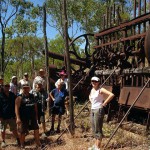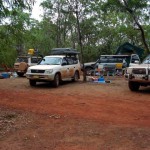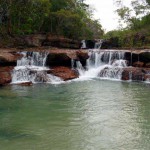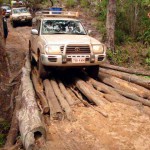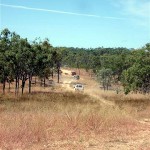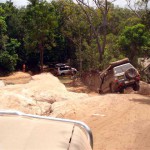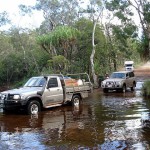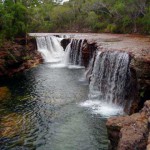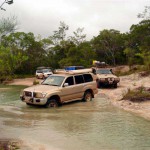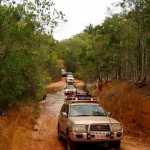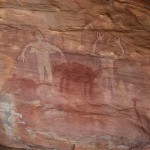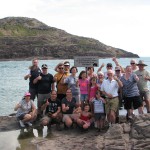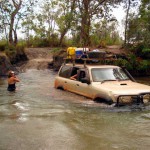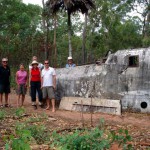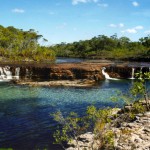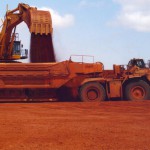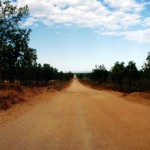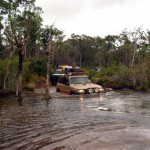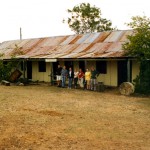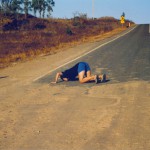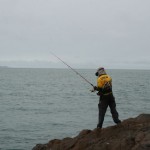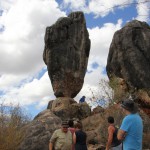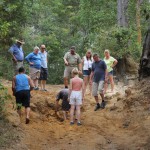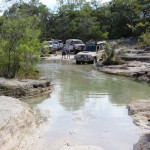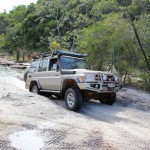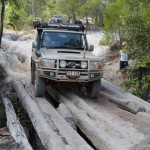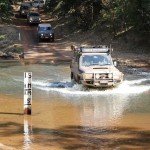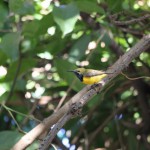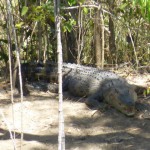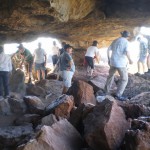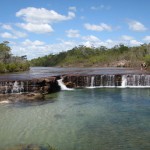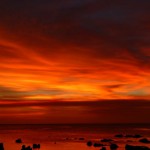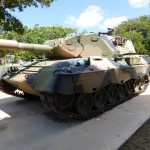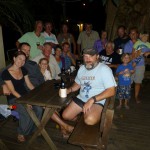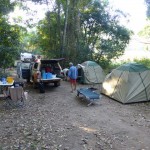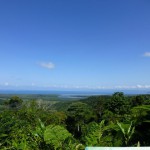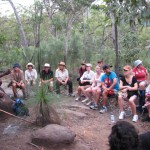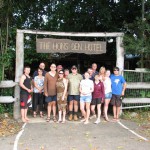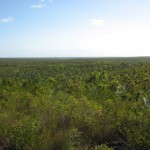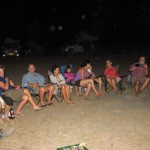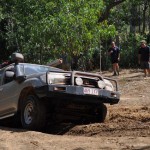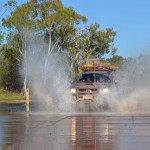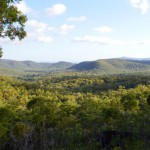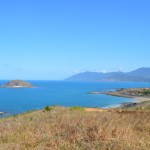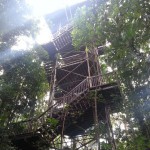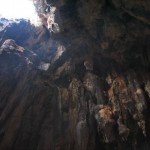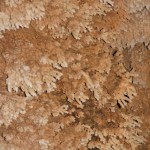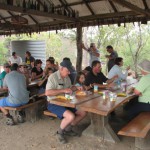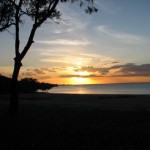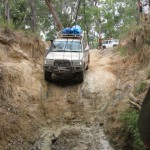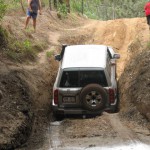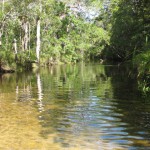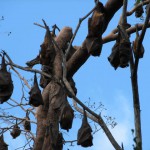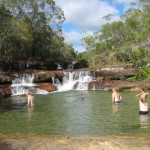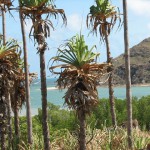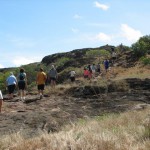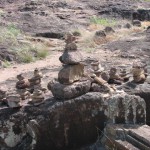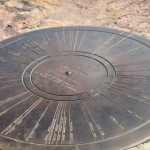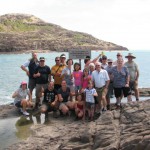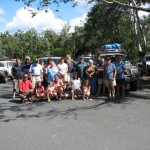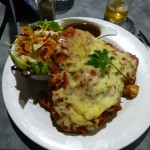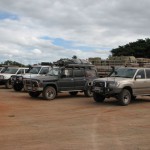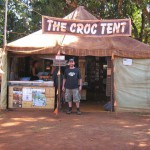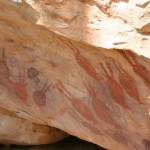18 Day Cape York Tours
Experience the real adventure of driving yourself through one of the last great wilderness areas of Australia. To stand at the most northerly point of Australia is a dream of many who enjoy the quest to journey to remote areas.
Day 1
We gather this morning in Cairns for a short meet and greet and then we travel up the beautiful
Kuranda Range to Mareeba, which enjoys over 300 days of sunshine each year. Then it’s on to
Dimbulah for a morning tea break and soon we head west to historic Chillagoe. This town boasts a
stunning mix of outback landscape, mining heritage, aboriginal art sites and fantastic limestone
caves. After lunch we are booked on a National Park Ranger guided cave tour. There are many other
interesting sites to see around Chillagoe, such as the Arts & Crafts Shop, Balancing Rock, the old
State Government owned copper smelters and Tom Prior’s Ford Museum. In the evening we sit
down to our Welcome Dinner, which is provided for us and we get to know each other better. After
dinner we set off on our Observatory Tour which rounds off a very busy first day.
Day 2
This morning we pack up our campsite and set off, leaving Chillagoe behind in the distance. We
head for the historic Tyrconnell Gold Mine, where we see the 140 year old quartz crusher. After lunch
it’s off to the old ghost town of Mt Mulligan, where we explore the abandoned coal mine site where
75 miners lost their lives in a massive underground explosion in September 1921. The old cemetery
contains the graves of those tragically killed that day. We then travel north on some challenging
4WD tracks through Kondoparinga Station and arrive in the afternoon at a delightful crossing on the
Mitchell River. It’s only a short distance before we are on the tar sealed Peninsula Development
Road where we soon arrive at Palmer River Roadhouse and set up camp. A hearty meal is provided
for us at the Roadhouse and this is a fitting end to another interesting day.
Day 3
We break camp this morning and leave for Lakeland and on the way we stop at the James Earl
Lookout. We soon head north west towards Laura where we visit the Split Rock Aboriginal art site
and the Quinkan & Regional Cultural Centre. After lunch we explore the old Railway Bridge to
Nowhere and the old Laura lock up. Native police from Laura were sent south to hunt the Kelly Gang
in the 1870s and they were present at Ned’s last stand in June 1880 at Glenrowan. Our journey takes
us on to Musgrave Roadhouse which was originally built as a telegraph station in 1886. Here we see
the well maintained airstrip with the big mango tree at the end of it, shading the lonely graves of
some of the pioneers of the Cape. We enjoy our camp here for the night which includes a hot shower
which helps wash away the red dust from the day’s travel. A meal can be purchased here if required.
Day 4
This morning we set off for Coen where we visit the Cape York Heritage House and call in to the
Quarantine Information and Inspection Centre. We continue our trip north towards Archer River
Roadhouse where we enjoy a pleasant stop at the café or down on the banks of the river. We are
soon heading along the PDR again towards our destination at Merluna Station. With its 416,000
acres, Merluna is a working cattle station but it also has prolific birdlife that can be seen at the
campground, along the rainforest lined creek and the many lagoons within walking distance of our
camp. There is also an abundance of wildlife including kangaroos, wallabies, dingoes, brumbies,
reptiles of all sizes; such as skinks, frill necked lizards and the elusive saltwater crocodiles. The
Cuscus has been seen on several occasions along the creek. When it's time to cool off, we can have
a swim in the above-ground pool, with its timber deck overlooking a large clearing down to the
lagoon where the wallabies often come in to graze.
Day 5
Today we continue on a well maintained gravel road leading into Weipa, a mining town on the
western side of the Cape. Arriving around midday, we set up camp in the shady surroundings of the
main camping ground with its 13 acres of tropical trees and green lawns. After lunch we are booked
on an Eco Boat Tour for a bit of bird watching and croc spotting. Later, a special treat for the
photographers is the spectacular sunset over the tranquil waters of Albatross Bay. In the evening we
enjoy a fabulous meal together which is provided for us. With the waves gently breaking on the
beach near our camp, we settle down for a good night’s sleep after another entertaining day.
Day 6
This morning we can do some shopping and top up with fuel before we leave Weipa. Our journey
today takes us through the Batavia Downs cattle station as we travel east again and join the
Telegraph Road not far from the Wenlock River. This river crossing is a lot safer these days with a
concrete bridge now spanning, what was a very challenging water crossing prior to its construction
in 2001. On the northern bank of the Wenlock we will camp at the historic Moreton Telegraph Station
with its majestic old mango trees. We will see the old vehicle pontoon that was used before the
bridge was built over the river and the high water levels from previous floods. We can take a stroll
along the banks of the river and look for the 110 bird species that have been noted in the vicinity,
and many, including the Palm Cockatoo and Magnificent Riflebird, may be observed along the
water’s edge. Agile Wallabies often feed in the grounds while the Common Spotted Cuscus (a type of possum) has been seen feeding on the leaves of Moreton's riverside trees. A walking track along the northern bank of the river and through the adjacent bushland will introduce us to some of the more
dominant and interesting species of the local flora. The track takes us to Cave Creek where the
bedrock has been eroded to form a natural bridge. A pleasant evening around the fire rounds off
another fun day.
Day 7
The first part of our adventure today takes us to Bramwell Junction where the Old Telegraph Track
branches off Bamaga Road and the real 4WD adventure of a Cape York trip begins. Only where it’s
safe to do so, we will negotiate several water crossings over the various creeks and rivers. Some
have particularly steep approach and departure angles. We stop for a lunch break along the OTT and
take in the wonderful diversity of the flora and fauna of the Cape. Our destination today is Eliot Falls.
It’s a beautiful spot where we can enjoy a refreshing swim and wash the dust away in the pristine
waters of Canal Creek or Eliot Creek. Our camp site is in the camp grounds at the falls, where we can
light a fire, if we remember to collect some firewood along the way.
Day 8
This morning we won’t have to pack up our tent and camping gear as we have the luxury of a free
day. There is no driving scheduled and here at Eliot Falls we will have plenty of time to soak up the
atmosphere of one of the most delightful camp sites on the Cape. Twin Falls and Indian Head Falls
are both very popular swimming holes and many hours can be spent in these crystal clear pools of
fresh water. A very relaxing time spent here will have us well and truly refreshed for the following
day’s adventure.
Day 9
Today our destination is the seaside village of Seisia, right on the tranquil shores of Torres Strait.
First, we must cross a few creeks on our way to the mighty Jardine River. Fortunately, we can get to
the other side of the river via the vehicle ferry which operates only during the daylight hours. We
arrive at the Seisia Holiday Park and set up camp. It’s a lovely spot where we will be relaxing for the
next few days. A short sightseeing walk around the campground shows us the wharf right next door
and the beautiful white sandy beach where the sunrises and sunsets are a ‘must do’ for all the
travellers who make it up to this magic part of the world. Our dinner tonight is provided for us in the
restaurant at the campground.
Day 10
Today’s the day we get to stand on the most northern ‘Tip’ of mainland Australia. On the way, we
visit the Croc Tent, where souvenirs and refreshments are available on the roadside at Lockerbie.
Finally, we get to walk the last few hundred metres to the very top of the Australian continent. After
our walk, we head to the historic ruins of the Somerset Homestead. This is the site where the Jardine
family lived in the late 1800s and just down a small sandy track near the beach, we find the graves of
Frank Jardine and his wife Sana. We stop for lunch in a lovely shady spot near where the old jetty
once stood. On the way back to camp we see the WW2 wreck of an old DC3 aircraft which crashed in
May 1945, with tragic results. We also investigate another WW2 wreck, a Beaufort Bomber near
Jacky Jacky Airport. This afternoon is free after that, so there is an opportunity to throw a line in
from the wharf or relax on the beach. This is a great place to unwind after the challenging trip north.
Also, a meal can be purchased here at the restaurant if required.
Day 11
This is another free day to do whatever we choose, although we recommend a ferry trip over to
Thursday Island and Horn Island which can also include guided bus tours and lunch. There is a
good deal of historic significance in the Torres Strait with the Green Hill Fort and the All Souls
Quetta Memorial Church on TI, and the WW2 Museum on Horn Island. Tours can be arranged
through the Seisia Holiday Park office, but we strongly advise to book early in order to avoid
disappointment. When booking, remember to ask for your senior’s discount if applicable. As well,
we are able to provide you with the contact details of fishing charter operators who can take you out
on a day trip to one of the best fishing spots in Australia. The beautiful aqua coloured waters around
the Straits are sure to stay in our memory forever. Dinner can be purchased at the restaurant if
required.
Day 12
We are well and truly refreshed today as we pack up camp and begin our journey southwards
crossing the Jardine River once again on the ferry. We travel to the beautiful Fruit Bat Falls this
morning for a refreshing swim before we make our way across to the east coast of the Cape to
Captain Billy’s Landing. It’s here we find a flat grassy area right on the beach, which was the
loading site for Comalco’s cattle operation in the Heathlands area several decades ago. This
picturesque spot is our lunch stop and we see the remains of the old concrete landing ramp that has
started to break up from the constant pounding of the sea. After lunch we head back to the main
track and set out for Bramwell Station where we will camp for the evening. The Station has a
licensed bar and entertainment is provided as well. Also, a hearty meal can be purchased here by
our hungry travellers if required.
Day 13
Our journey today includes a short detour out to the east on the Lockhart Road, to the historic
Batavia Goldfields. It’s here we will see the rusting old mining machinery that was once used to
process gold here, well over a century ago. We camp tonight at the Archer River Roadhouse in their
shady camp ground and dinner can be purchased at the licensed cafe if required. We can
recommend their famous burgers as the best on the Cape. Many of our travellers have enjoyed their
quality over the years.
Day 14
Today’s part of our journey is a direct run south towards Musgrave Roadhouse where it’s an ideal
place to refuel and freshen up before we head east again, this time into Lakefield National Park. Our
trip takes us into the second largest National Park in Queensland which covers approximately 5,500
sq kms. It features historic sites, 4WD tracks, plentiful wildlife, diverse vegetation, large rivers and
extensive wetlands. Many of these are fringed by tall paper barks and thick rainforest. Soon after
entering the Park, we stop at a lily covered billabong, where we can spot some of the spectacular
birdlife that lives here, including brolgas, jabiru, magpie geese, egrets, parrots and finches. We
collect our firewood along the way and at Kalpowar Crossing, we set up our camp on the Normanby
River with a crackling fire for company. The sounds of the night in this peaceful place are sure to put
us straight to sleep after our dinner.
Day 15
Today we pack up and break camp and set off for Old Laura Station, which had its beginnings in the
cattle industry dating back to the 1870s. The homestead and several of the out buildings are still
pretty much intact and it is a great place to get a close look at how our pioneers lived in the bush.
On our way along Battle Camp Road, just a few kilometers before we hit the bitumen, we stop at
Isabella Falls and see another crystal clear mountain stream on our way in to Cooktown. The lush
rainforest indicates that we are approaching the coast and soon we are in the town named after the
famous British explorer who mapped our eastern coastline 250 years ago. We arrive in the
afternoon and make our way to our camp site and set up. In the evening, we are provided with a meal
of delicious fish and chips before turning in for the night.
Day 16
We have today to ourselves in Cooktown and this gives us the opportunity to explore the many
places of interest here including the site where the HMB Endeavour was beached for repairs in June
1770. We can take a leisurely stroll around the town and enjoy the relaxed charm of the place. The
botanic gardens, the arts and craft shop, the history centre, the Croc Shop, the beautifully restored
bank buildings, and the spectacular Grassy Hill Lookout, are all well worth seeing. Dinner can be
purchased here in Cooktown if required.
Day 17
This morning we visit the historic Cooktown Cemetery which is the final resting place of many of the
pioneers of the Cape. Later we are given a tour of the James Cook Museum with its many items of
historical significance, including the original anchor and cannon from the Endeavour. In the
afternoon, we set off down the Mulligan Highway and after turning off to Archer Point, we arrive at
the lookout. It’s from here that we can see all the way out to the Great Barrier Reef. Then it’s off to
Black Mountain which is over 300 metres high, with its fascinating rock formations and the place of
Aboriginal legends. We soon arrive at the Lion’s Den Hotel at Helenvale, where we camp on the
grassy banks of the Annan River. For our last night together, we are provided with our Farewell
Dinner at this historic pub, which was built in 1875. The food here is great and the atmosphere is
unforgettable, as we celebrate our time together, conquering Cape York.
Day 18
Today, we head for the spectacular Bloomfield Track, which represents a challenging drive through
the World Heritage listed Daintree Rainforest. It’s a 4WD only track, traversing several creeks and
river crossings including some steep climbs and descents. We cross the Bloomfield River at Wujal
Wujal, and soon we get to enjoy the view from the tops of the peaks as we make our way to Cape
Tribulation. We stop for a lunch break at Cape Tribulation, and it’s here we get to see where the
rainforest meets the reef. This is truly a beautiful part of Australia and soon we are headed for the
Daintree River Ferry, where we cross over and begin to make our way south towards Port Douglas.
Pretty soon we are following the stretch of road that winds its way beside the Pacific Ocean for
many kilometers as we get closer to Cairns. We have enjoyed a truly memorable experience,
travelling by 4WD to Cape York, building friendships that are sure to last a lifetime and sharing some
of the most beautiful natural scenery in the world. We arrive in Cairns in the late afternoon and bid
our farewells before heading home to share our amazing adventures with our families and friends.

